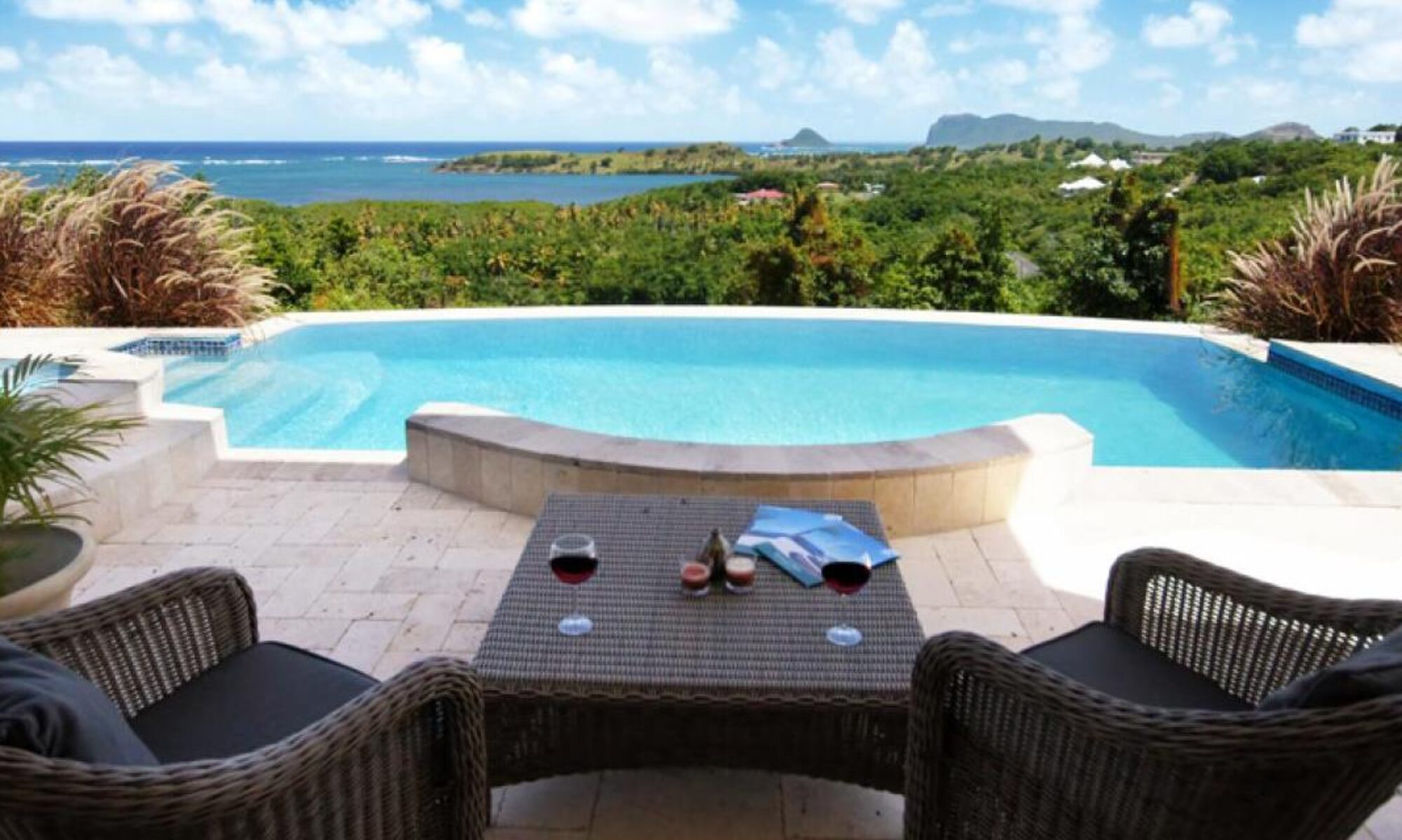At Home in Saint Eustatius The Caribbean Island of Saint Eustatius is a perfect place for a long lazy holiday and is clean, unhurried and unspoiled. There is practically no crime, the reefs are teeming with fish and the gentle tradewinds keep the island cool. The people of Statia, as this Caribbean Island is fondly known, are warm and friendly. All in all, it is like being on a Caribbean island 25 or 30 years ago. Saint Eustatius Real Estate, Economy and Infrastructure
The economy of the island is stable and has great prospects for growth in the near future. There is virtually no unemployment, the work force is skilled, and the infrastructure is in place to ensure and handle sustained growth. St. Eustatius is a politically stable democratic country with peaceful, hardworking people, making it a safe and pleasant place to invest in Caribbean real estate. If you want to spend a considerate of your time in peace and tranquility then it may be worth to invest in a piece of St. Eustatius real estate. There are no real estate taxes or property taxes on Statia, and land here is usually priced reasonably. A 4-bedroom villa would start at around $350,000, while condominiums start at about $250,000. Before buying St. Eustatius real estate, keep in mind that electricity is generally available on Saint Eustatius, but it depends on the location of the property. 95% of the island is wired, but property owners in remote areas may be required to enter into a contract with the local electricity company and total costs to get electricity to that area might become your responsibility. The island gets drinking water by collecting rainwater in cisterns, so check that the property has the required system of rainwater collection. Additional drinking water is supplied by local entrepreneurs from wells or from the reverse osmosis plant at the oil terminal. This is generally delivered by truck. The oil terminal has an over capacity of maximum 70.000 gallons per day. The government is in the process of building a water plant, and installing pipes. With its low crime, low unemployment, small population and developed infrastructure, choosing to visit or invest on the Caribbean Island of St. Eustatius is a very good idea.
Saint Eustatius Activities, Dining and Entertainment The Caribbean island of St. Eustatius is the perfect place for nature lovers with good hiking trails, at least 17 different types of orchids, some of them quite rare, and many kinds of iguanas, land crabs, butterflies and exotic birds. Serious hikers should wear long pants and sturdy shoes and carry water for any hike likely to last more than an hour. Bird watching is a fun activity, and the number of species is varied, with 25 resident species, 21 migrant species form North America and 12 species of seabirds. St. Eustatius has unique diving unlike any other in the Caribbean. Its exceptionally warm water and amazing underwater fissures and canyons, of volcanic origins, gives the entire area quite a diversified selection of dive spots. There are coral and sponge covered walls frequented by black rip sharks, eagle rays and many other larger fish. The shallower reefs are volcanic fingers that have become covered by a variety of Barrel sponges and pillar coral. In order to preserve the pristine marine life around the island, the St. Eustatius Marine Park was established in 1998. Local legend says that St. Eustatius suffered an earthquake and a part of the island collapsed into the sea. In addition, the wall supporting the quay for merchant ships collapsed from lack of maintenance. Many underwater vestiges can still be found on almost every dive, making each a small treasure hunt. There are also many wrecks on the bottom of the sea. Occasionally, relics like a perfectly intact bottle, an anchor or one of the blue beads that were once a slave’s salary can be discovered. All kinds of cuisine are available on the Caribbean Island of St. Eustatius, from barbecues to fancy European cuisine. The island has variety of restaurants serving interesting food at reasonable prices. Whatever your preference, you can easily find a place that serves it. There are also six Chinese restaurants on St. Eustatius as well as nooks that serve exclusively island fare. One can savor on good local food as well as typical west Indian staples like authentic oxtail or bull foot soup, fish, lobster, chicken or pork, made in accordance with the best homestyle recipes served with rice, plantain and salad. On a Friday night, some of the hotels and restaurants offer either a local live music show or a DJ.
Saint Eustatius Climate Many snowbirds and Caribbean real estate investors are drawn to the Caribbean island of St. Eustatius in winter, from mid-December to mid-April, to enjoy the island’s mild temperature and escape the cold. The balmy weather lasts pretty much throughout the year. Firmly within the zone of the northeast tradewinds, the island has a subtropical and oceanic climate, even warmth and steady cooling breezes. Saint Eustatius gets about 43 inches of rainfall each year. The temperature is generally milder than in most of the other Caribbean locations. January temperatures range from 73° to 81°F, with the hottest temperatures in July – from 78° to 86°F. The hottest temperatures hardly ever exceed 90°F. Rainfall can be quite erratic and vary from season to season and year to year, but is heaviest in the summer and the fall. This is the time of year when the steady northeast tradewinds are replaced by a light, variable kind of wind. This phenomenon also makes this the season of hurricanes, sweeping across the Caribbean. The winter is dry and temperature and rainfall are dependent on altitude. Higher elevations are cooler and wetter than coastal areas.
Saint Eustatius Location and Travel The Caribbean island of Saint Eustatius is located in the northern Leeward Islands in the northeastern Caribbean, and lies to the east of the Virgin Islands. It is 150 miles east of Puerto Rico, 90 miles due east of St. Croix and 38 miles from St. Maarten. It has an area of 8.1 square miles and the regional capital is Oranjestad. The airport is FD Roosevelt, located less than a mile from Oranjestad. Direct flights are generally not available from North America, and travelers from the U.S. and Canada typically connect through the Princess Juliana Airport in St. Maarten. Local carriers operate daily flights from the Caribbean Island of St. Maarten, allowing passengers to make connections with regional as well as international carriers. There is no regular boat or ferry service but anchorage is available at Oranje Bay marina for yachts. Taxis and rental cars are easily available here. Taxi dispatch is at the Franklin Delanor Roosevelt Airport and taxis do not have meters. The rates are fixed by route and you should check the fare before taking a ride.
If you have a valid foreign or international driver’s license, you can drive a car on St. Eustatius. There are at least thirteen different car rental companies. The Antillean Guilder is the local currency and fixed to the United States dollar at US $ 1.00 to ANG 1.80. However, the US dollar is widely accepted and local banks also exchange other foreign currency and most major credit cards are accepted everywhere. There is a 7% government service charge on room rates and food and beverage. There is a service charge of 15% so tipping is not required. Dutch is the official language and used in government administration and schools but English is spoken everywhere. In general, casual summer wear is acceptable on St. Eustatius, with casual elegant attire for a night out in one of the intimate and chic restaurants.
Saint Eustatius History and Culture The island was first discovered in 1493 by Christopher Columbus and claimed by at least 22 nations over the next 150 years. In 1636, towards the end of the 80-year war between Spain and Holland, the Dutch West India Company colonized Statia. A commander was stationed here, who governed over the islands as well as Saint Maarten and Saba. During most of the 17th and 18th century, it was a busy trading center and thousands of ships regularly visited her shores. This Caribbean Island also gained importance for sugar cultivation. St. Eustatius also had one of the first Jewish settlements in all of the New World, dating back to the 18th century. During late 18th century, St. Eustatius sold arms and ammunition to the rebellious thirteen British Colonies in North America and was their major supplier for ordnances. It became the subject of much conflict among some of the most powerful seafaring nations, and the continuing trade of Saint Eustatius with the newly formed United States was one of the main reasons for the Fourth Anglo-Dutch War – with disastrous results for Dutch trading. As a direct consequence of the war, the British took Saint Eustatius in 1781. Ten months after that, the French, who were allies of the Dutch, conquered it and the Dutch regained command in 1784. As the 18th century ended, Saint Eustatius gradually lost importance and merchants and planters left the island, abandoning homes and warehouses. Throughout the 19th and early 20th century, St. Eustatius remained quiet. In the 1960’s and 70’s, the people here became more aware of the value of their unique cultural heritage and steps were taken and programs begun to preserve and maintain it, for themselves as well as for history-minded visitors. Flag Coat of Arms
Capital Oranjestad Official Languages Dutch and English Government St. Eustatius Administrator H.C.I. Gittens Governor of N.A. Frits Goedgedrag Parliamentary Democracy Constitutional Monarchy Part of the Netherlands Antilles Area 21 km² 8.1 sq mi Population 2001 Estimate: 2,292 Density 109 /km² (ranked as part of N. A.) Currency Netherlands Antillean gulden (ANG) Time Zone -4 (UTC-4) Internet TLD .an Calling Code +599
Maps
Netherlands Antilles: St. Eustatius Island


